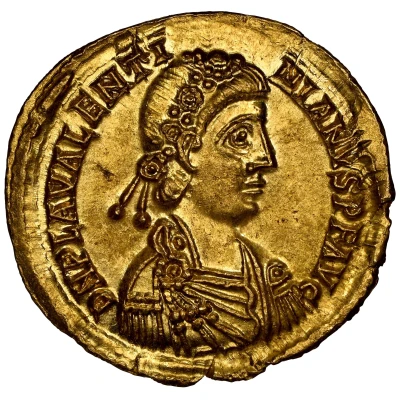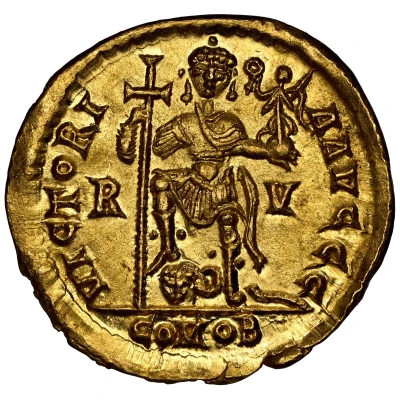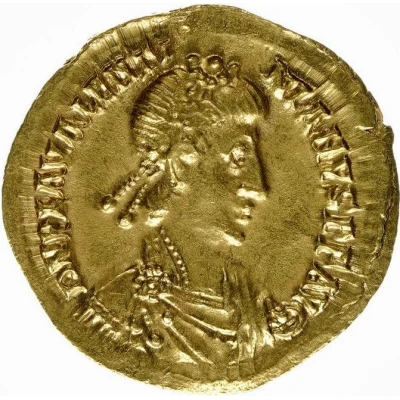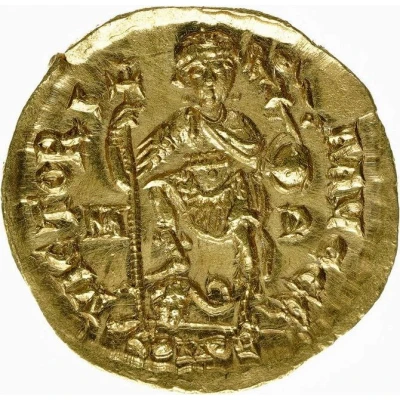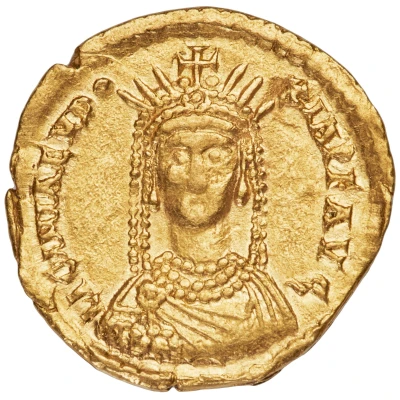
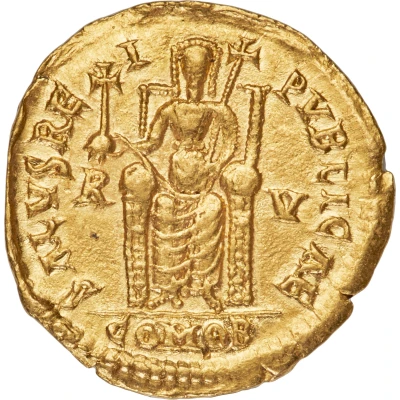

© Heritage Auctions
Solidus - Licinia Eudoxia SALVS REI PVBLICAE; Ravenna
| Gold | 4.28 g | 22 mm |
| Issuer | Western Roman Empire (Rome) |
|---|---|
| Emperor | Valentinian III (424-455) |
| Type | Non-circulating coin |
| Years | 430-445 |
| Value | 1 Solidus |
| Currency | Solidus |
| Composition | Gold |
| Weight | 4.28 g |
| Diameter | 22 mm |
| Shape | Round (irregular) |
| Technique | Hammered |
| Orientation | Variable alignment ↺ |
| Demonetized | Yes |
| Updated | 2024-10-04 |
| Numista | N#373718 |
|---|---|
| Rarity index | 100% |
Reverse
Eudoxia enthroned facing, globus cruciger in right hand, transverse long cruciform scepter in left; R-V across fields, mintmark in exergue.
Script: Latin
Lettering:
SALVS RE-I - PVBLICAE
R V
COMOB
Comment
This intriguing empress served as a human bridge between the Eastern and Western Roman Empires. Licinia Eudoxia, daughter of the Eastern Roman Emperor, Theodosius II, and his wife Aelia Eudocia, became renowned for her beauty, as she grew up in the glittering East Roman court. While still an infant, she was betrothed to her cousin, five-year-old Valentinian III, heir to the Western Roman throne. Valentinian III was installed as emperor of the west, in AD 425, when he was just six, and the wedding took place in Constantinople 12 years later, in AD 437. Politically, it was an ideal union, since it cemented ties between the East and West Roman Empires at a time of frequent crises, invasions and revolts in both realms. Although Valentinian was reputedly unfaithful to Eudoxia, the couple produced two daughters and the marriage endured until Valentinian's murder, in AD 455. Although she favored the dashing officer Majorian as her late husband's replacement, Eudoxia was instead forced to marry the elderly Petronius Maximus, the man who had schemed Valentinian's death and usurped the throne. Rather than quietly acquiesce, Eudoxia summoned help from Gaiseric, king of the Vandals, who had been betrothed to one of her daughters. Her plea had unforeseen consequences, however: Gaiseric set sail from Carthage to Rome, killed Petronius Maximus, sacked the city, and carried Eudoxia and her daughters off to captivity in Carthage, where they remained until AD 462, when the East Roman Emperor Leo I secured her release. Accounts for the remainder of her life differ, some claiming she returned to Rome, while others suggest she spent the remainder of her life in Constantinople.Interesting fact
One interesting fact about this coin is that it features an image of Licinia Eudoxia, the wife of Emperor Theodosius II, on the obverse (front side), while the reverse (back side) bears the image of a Victory holding a wreath and a palm branch, symbolizing the Roman Empire's military triumphs and the reigning monarch's authority.
